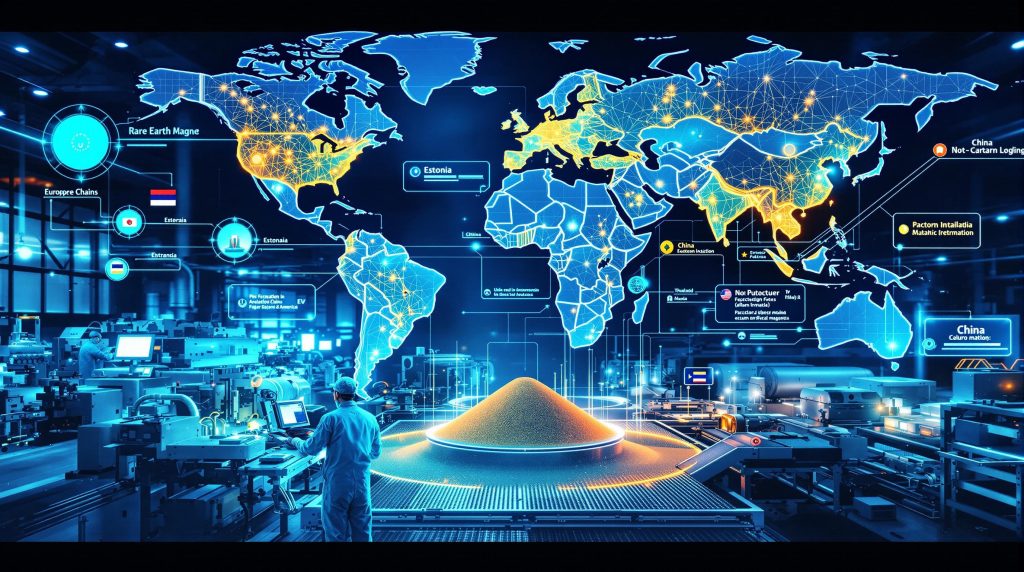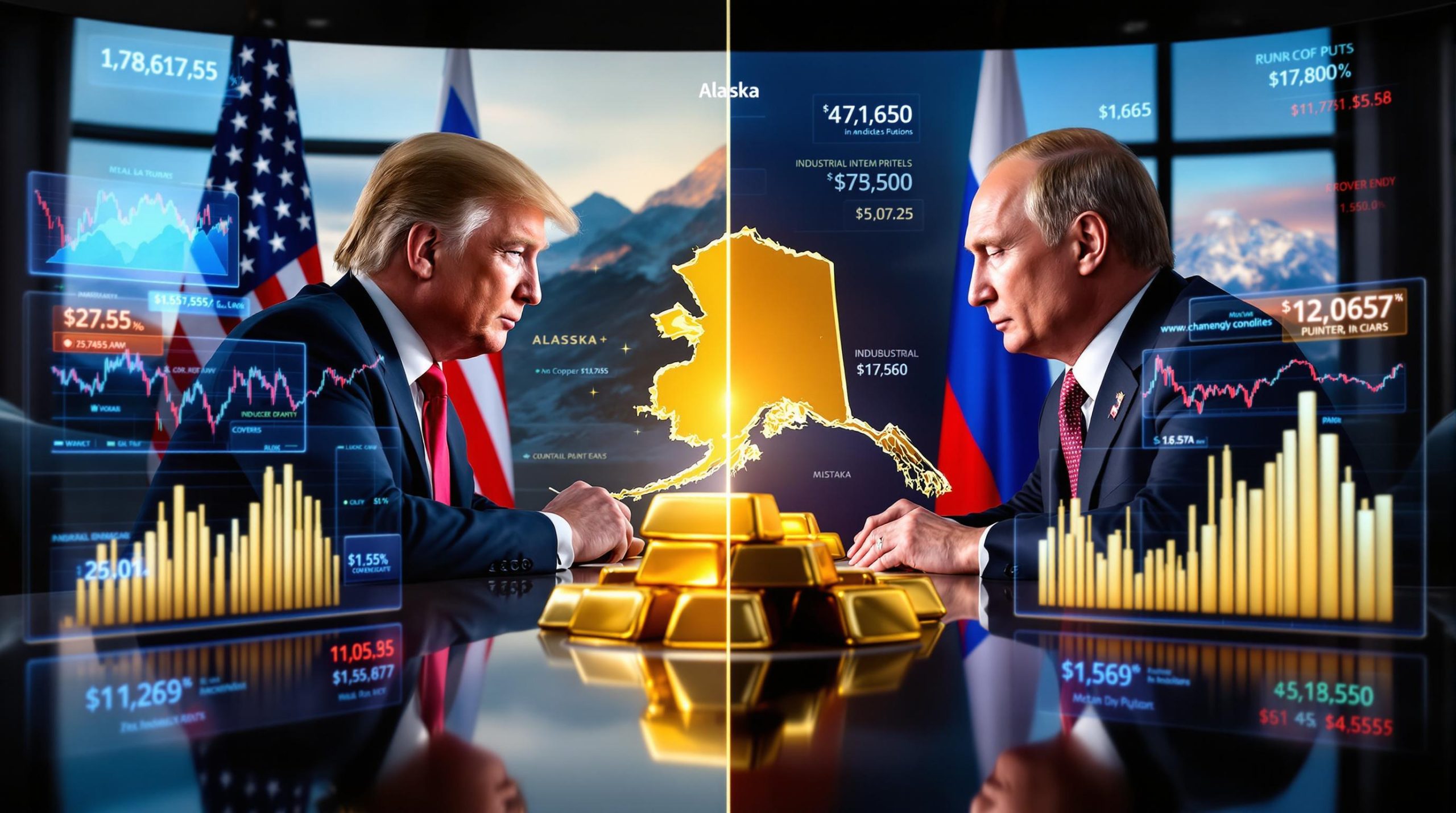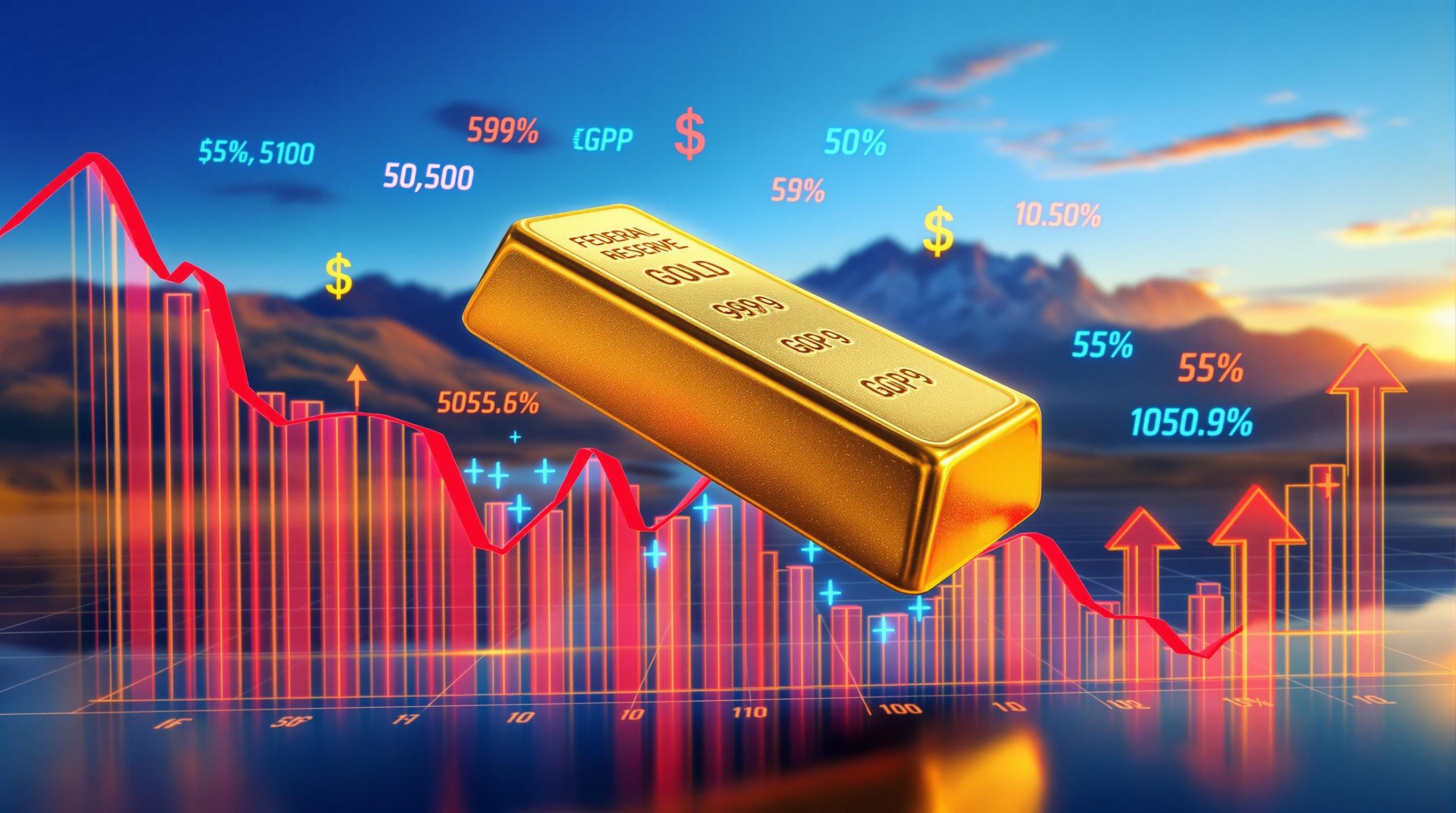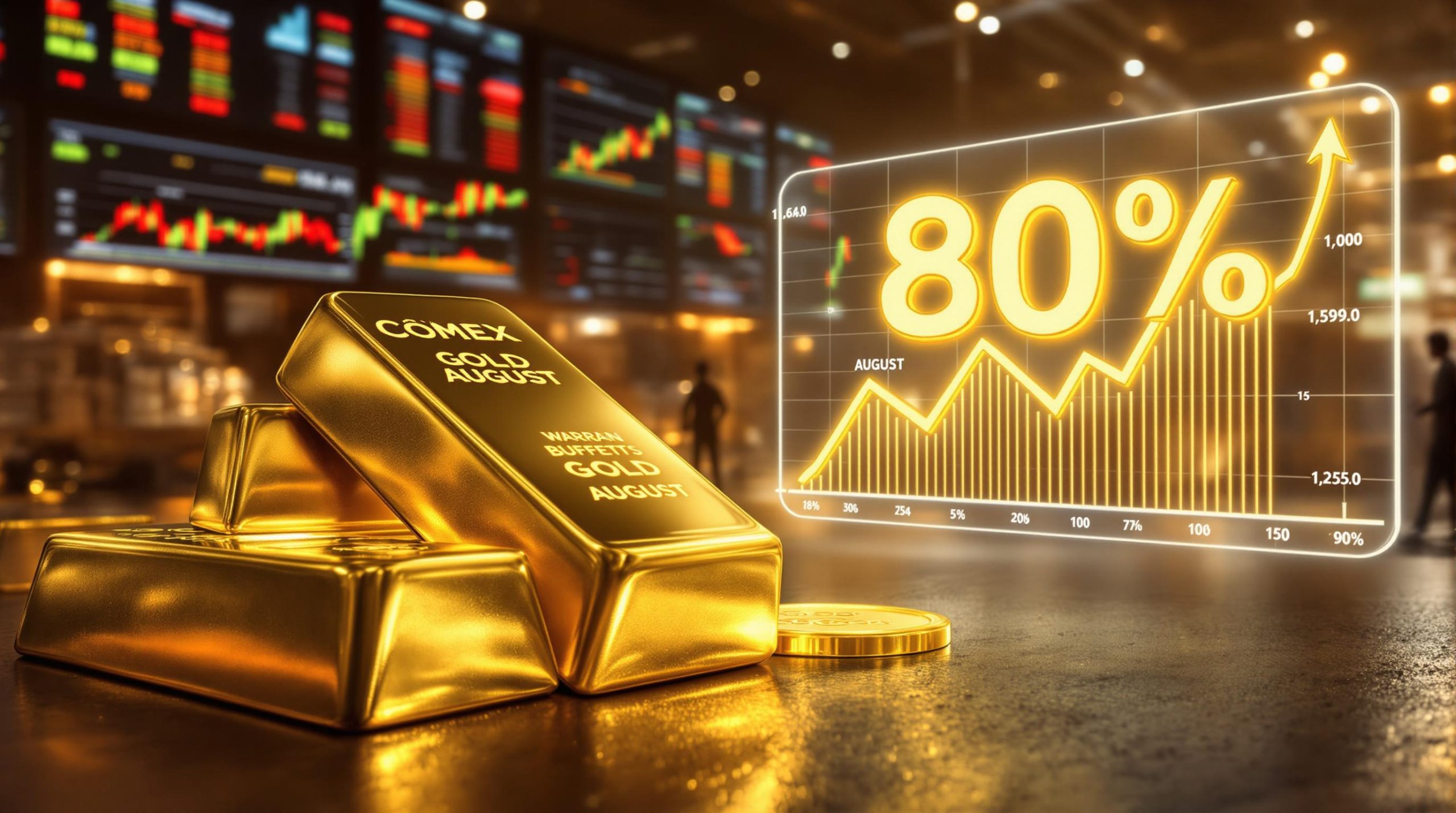Breaking China's Rare Earth Magnet Monopoly: Neo Performance Materials' Strategic Approach
Neo Performance Materials is strategically challenging China's 93% dominance of global rare earth magnet production through a multi-continental manufacturing strategy and innovative supply chain development. The company's three-pronged approach represents one of the Western world's most significant efforts to establish rare earth independence outside of Chinese control.
What Makes Neo Performance Materials a Strategic Player in Rare Earth Markets?
A Diversified Mid-Stream Strategy
Neo Performance Materials has deliberately positioned itself in the mid-stream and downstream segments of the rare earth value chain, avoiding the volatility and capital intensity of mining operations. This strategic focus allows the company to maintain profitability regardless of raw material price fluctuations.
The company's business model includes several key advantages:
- Consistent profitability through economic cycles with positive cash flow generation
- Minimal sustaining capital expenditures compared to mining operations
- Pass-through capabilities for raw material cost variations
- Concentration on higher-margin processing and magnet fabrication activities
This approach shields Neo from the boom-and-bust cycles that often impact mining-focused companies while allowing them to focus on value-added manufacturing processes.
Three Specialized Business Segments
Neo operates through three complementary business units that provide vertical integration and market diversification:
- Magnequench – Produces neodymium-iron-boron (NdFeB) magnetic powders and bonded magnets for electric motors, sensors, and other applications
- Chemicals & Oxides – Manufactures specialty chemicals and rare earth oxides for applications including automotive catalysts, water treatment, and electronics
- Rare Metals – Processes and recycles specialty metals including gallium, indium, hafnium, and tantalum for semiconductor, aerospace, and defense applications
This diversified approach spreads risk across multiple end markets while maintaining expertise in rare earth processing across the value chain.
Global Manufacturing Footprint
With operations across six countries, Neo has established a manufacturing network that spans multiple continents:
- China – Strategic facilities producing magnetic powders, magnets, and specialized rare earth compounds
- Estonia – Home to the new European CRM facility and planned heavy rare earth separation plant
- Thailand – Light rare earth processing capabilities including separation and refining
- Germany – Specialty chemicals and automotive catalyst production
- Canada – Rare metals processing and recycling facilities
- United Kingdom – Advanced material production facilities
- Singapore – Dedicated research and development center
This geographical diversification provides resilience against regional disruptions while maintaining presence in key markets.
What Financial Results Demonstrate Neo's Success?
Strong Q2 2025 Performance
Neo's most recent quarterly results demonstrate the effectiveness of its diversified strategy with solid financial performance:
- Revenue reached $114.7 million in Q2 2025
- Adjusted EBITDA increased 42% year-over-year to $19 million
- Operating income of $8.2 million
- Net income of $5.4 million or $0.13 per share
- Management raised 2025 guidance to as much as $68 million in Adjusted EBITDA
- Quarterly dividend of C$0.10 per share declared (payable September 26, 2025)
- $2.3 million in stock repurchases since June 2025
These results show Neo's ability to deliver shareholder returns while investing in strategic growth initiatives.
Segment-Specific Growth
Each business segment contributed to the company's overall performance with notable developments:
- Magnequench: Achieved 31% volume growth with a 37% increase in bonded magnet shipments specifically for electric vehicle traction motors
- Chemicals & Oxides: More than doubled profitability after selling legacy Chinese separation assets and launching a new emissions-control catalyst production line
- Rare Metals: Delivered $10.8 million in Adjusted EBITDA, supported by gallium recycling operations in North America and increased hafnium demand resulting from U.S. tariffs on Chinese imports
The company's segment diversification demonstrates how Neo can capitalize on shifting market dynamics across multiple product lines.
How Is Neo Establishing Rare Earth Independence from China?
European Permanent Magnet Production
Neo is nearing completion of a groundbreaking permanent magnet manufacturing facility in Narva, Estonia that represents a significant milestone in Western rare earth independence:
- First commercial-scale rare earth magnet production facility in Europe
- Will supply European automotive manufacturers with locally-produced magnets for electric vehicles
- Reduces European dependence on Chinese magnet imports for critical applications
- Grand opening scheduled for September 2025
- Already secured a traction-motor magnet contract worth an estimated $50 million in cumulative revenue
This facility addresses a critical vulnerability in Western supply chains by establishing European production capacity for components previously sourced almost exclusively from China.
Heavy Rare Earth Separation Capabilities
The company is developing unprecedented Western capabilities in heavy rare earth processing:
- Constructing a pilot heavy rare earth separation line adjacent to the Estonian magnet plant
- Creating the first Western facility capable of producing dysprosium and terbium—critical elements for high-performance magnets
- Establishing the foundation for a full-scale heavy rare earth facility once consistent feedstock is secured
- Developing European know-how in heavy rare earth separation while respecting Chinese technology transfer restrictions
This initiative addresses one of the most significant gaps in Western rare earth capabilities—the ability to separate and purify heavy rare earth elements like dysprosium that are essential for high-temperature magnet applications.
Strategic Market Positioning
Neo has strategically targeted the European market while maintaining flexibility for North American expansion:
- Recognized that Europe's motor output market is 2.5 times larger than the U.S. market
- Leveraged European government grants and expedited permitting processes
- Maintained ongoing discussions with Washington regarding potential U.S. expansion
- Developed dual-track supply chains that allow customers to meet government requirements for onshore content in both regions
This balanced approach allows Neo to capitalize on immediate European opportunities while positioning for potential North American growth.
What Challenges Does Neo Face in Breaking China's Monopoly?
Feedstock Security
Securing reliable sources of rare earth raw materials remains a significant challenge for Neo and other Western processors:
- Current operations still depend partially on Chinese heavy rare earth separation facilities subject to export controls
- Need to develop consistent non-Chinese feedstock sources for the European separation facility
- Must balance utilization of entrenched Chinese operations while nurturing alternative supply chains
- Face competition from Chinese companies for access to non-Chinese raw materials
The lack of developed Western mine production for heavy rare earths in particular represents an ongoing vulnerability in Neo's supply chain diversification efforts.
Scale and Competition
Despite Neo's progress, significant challenges remain in establishing competitive scale against Chinese producers:
- Chinese competitors maintain overwhelming production volume advantages with decades of established capacity
- Building customer confidence in non-Chinese supply chains requires time and demonstrated reliability
- Creating a parallel supply chain requires broader industry participation and investment beyond a single company
- Chinese producers benefit from lower energy costs and less stringent environmental regulations
These scale disadvantages mean Neo must target higher-value applications where quality and supply security command premium pricing.
Regulatory Navigation
Neo must carefully navigate complex international regulations that affect rare earth supply chains:
- Adhere to Chinese export control restrictions while developing European capabilities
- Meet Western traceability and environmental compliance requirements
- Align with evolving government incentives and tariffs tied to onshore content
- Balance technology transfer limitations with the need to develop Western expertise
This regulatory complexity adds costs and operational challenges that must be managed alongside production considerations.
Why Is Neo's Progress Significant for Global Supply Chains?
Strategic Independence
Neo's developments represent critical progress toward reducing Western dependence on Chinese rare earth magnets:
- Creating alternative supply chains for components essential to electric vehicles and renewable energy technologies
- Establishing institutional knowledge and manufacturing capabilities outside China
- Developing traceability systems that meet Western audit requirements
- Building customer confidence in non-Chinese supply options through demonstrated production
These efforts address a strategic vulnerability that has concerned Western governments and manufacturers for over a decade.
Technological Leadership
The company's advancements demonstrate Western capability to reclaim rare earth expertise that had largely migrated to China:
- Leveraging 30 years of institutional knowledge in rare earth processing
- Establishing the first Western heavy rare earth separation capability in decades
- Applying advanced manufacturing techniques to permanent magnet production
- Creating a foundation for expanded Western rare earth processing expertise
This knowledge development is particularly significant as Western countries seek to rebuild technical capabilities in critical minerals energy transition.
Market Transformation
Neo's approach is helping reshape the global rare earth market structure:
- Demonstrating financial viability of mid-stream and downstream rare earth operations outside China
- Creating customer awareness of supply chain vulnerabilities and alternative sourcing options
- Supporting development of a more distributed global supply network
- Establishing a model for Western rare earth manufacturing that others can follow
These market-driven changes complement government initiatives aimed at securing critical minerals policy and supply chains.
What Future Developments Can Be Expected?
Expansion Opportunities
Neo has indicated several potential growth vectors beyond its current initiatives:
- Possible U.S. expansion if "right circumstances" materialize including government support
- Scaling up heavy rare earth separation once consistent feedstock is secured
- Potential for additional automotive magnet contracts following successful Estonian plant launch
- Continued development of gallium recycling capabilities in North America to address semiconductor industry needs
These growth opportunities would further strengthen Western rare earth independence if realized.
Industry Ecosystem Development
The company has expressed support for broader industry development beyond its own operations:
- Encouraging more qualified players to enter various segments of the rare earth value chain
- Building customer confidence in non-Chinese supply chains through demonstrated reliability
- Supporting a better distribution of supply and capability across regions
- Creating a more resilient global rare earth ecosystem through diversification
This collaborative approach acknowledges that no single company can fully address supply chain vulnerabilities.
Technology Evolution
Neo continues to advance rare earth processing and magnet technology through ongoing research:
- Developing manufacturing techniques that meet Western environmental standards
- Creating magnets optimized specifically for electric vehicle traction motors
- Improving recycling processes for critical rare metals including gallium and indium
- Advancing separation technologies for heavy rare earths to reduce processing costs
These technological advancements strengthen Neo's competitive position while supporting broader Western capabilities in mining industry innovation.
Frequently Asked Questions About Neo Performance Materials
How does Neo remain profitable despite rare earth price volatility?
Neo's mid-stream strategy allows it to pass raw material price fluctuations directly to customers while focusing on value-added processing and manufacturing with higher margins. This approach shields the company from the boom-and-bust cycles that often impact mining operations by focusing on transformation processes rather than resource extraction.
What makes Neo's Estonian magnet plant significant?
The Estonian facility represents the first commercial-scale rare earth permanent magnet manufacturing plant in Europe, breaking China's near-monopoly on this critical component for electric vehicles and renewable energy. It establishes a Western supply chain for magnets that previously came almost exclusively from China and supports European manufacturers seeking to reduce supply chain vulnerabilities.
How does Neo's approach differ from other Western rare earth companies?
Unlike many Western companies focused primarily on mining or separation, Neo has established a fully integrated mid-stream and downstream operation that spans multiple continents. This diversified approach provides greater resilience and market access than single-location operations while avoiding the capital intensity of mining projects.
What role does Neo play in electric vehicle supply chains?
Neo produces the magnetic powders, rare earth magnets, and magnetic assemblies critical for electric vehicle motors and sensors. The company's ability to provide these components from non-Chinese sources is increasingly valuable as automotive manufacturers seek to diversify supply chains and meet government requirements for locally-sourced components.
Disclaimer: This article contains forward-looking statements about Neo Performance Materials and the rare earth industry. These statements involve risks and uncertainties, and actual results may differ materially from those projected. The financial figures and business developments mentioned represent the most recent publicly available information but should not be used as the sole basis for investment decisions.
Further Exploration
Readers interested in learning more about rare earth supply chains can explore related educational content at Neo Performance Materials' website: https://www.neomaterials.com/
For those interested in the geopolitical implications of rare earth supplies, further information about Greenland critical minerals provides valuable context on emerging sources that could support Western supply chains.
Additionally, those tracking global developments might find World Wants to Break China's Rare Earth Monopoly an insightful analysis of the challenges facing companies like Neo Performance Materials in their quest for rare earth independence.
Ready to Spot the Next Major Mineral Discovery?
Unlock real-time insights into significant ASX mineral discoveries with Discovery Alert's proprietary Discovery IQ model, transforming complex exploration data into actionable investment opportunities before the broader market catches on. Visit https://discoveryalert.com.au/discoveries/ to explore how historic discoveries have generated substantial returns for early investors.




